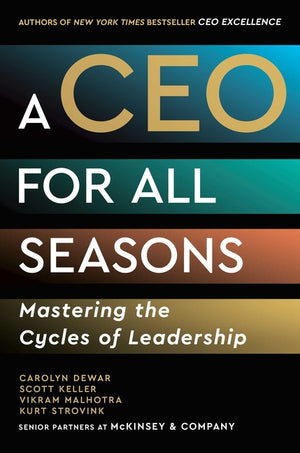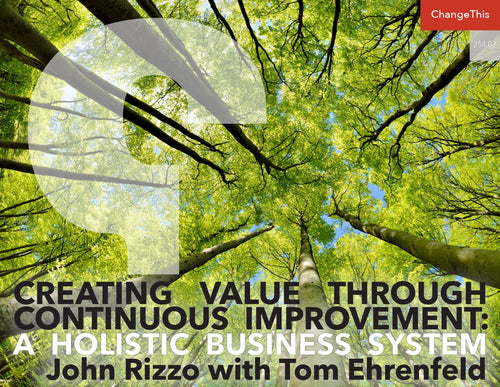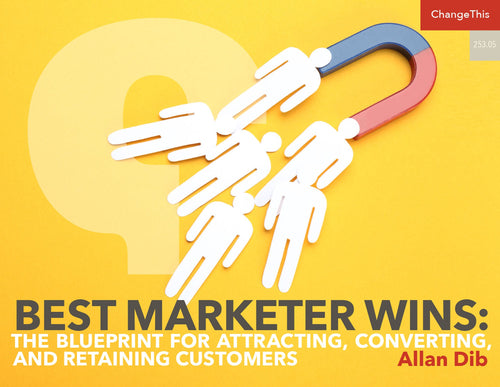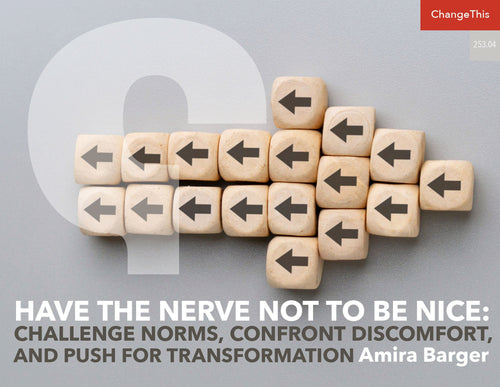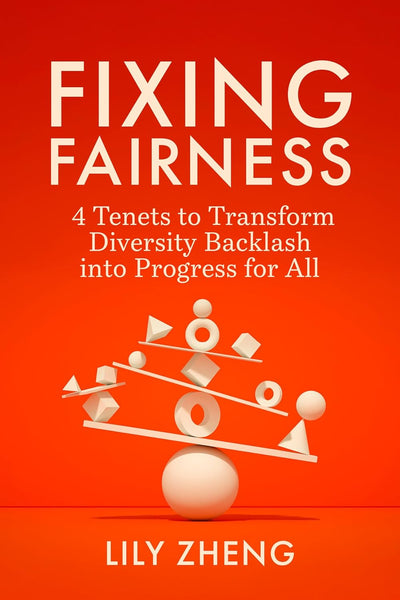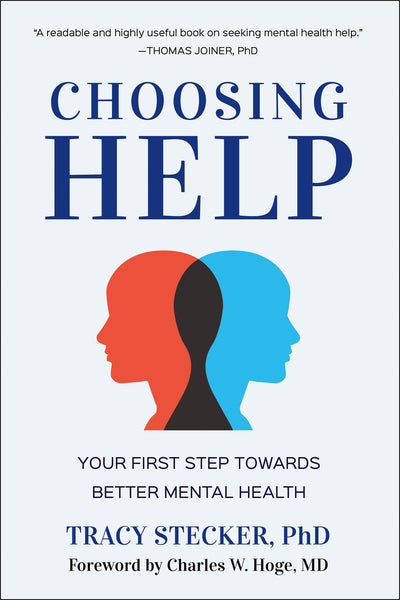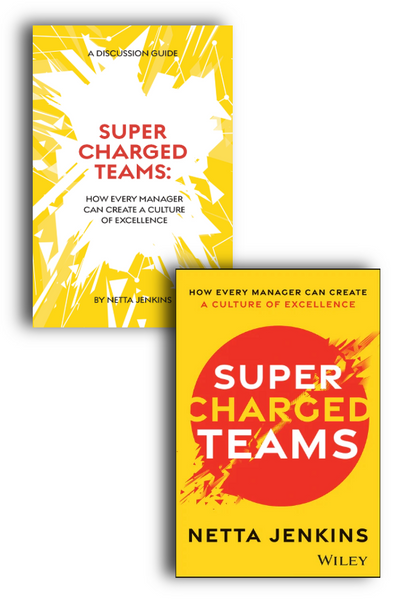How Great CEOs Nail Their First 100 Days
In A CEO for All Seasons, four Senior Partners at McKinsey & Company offer a compact, insight-packed guide to navigating the distinct phases of leadership that every CEO must pass through on their way to mastery. In this article, they focus on the first 100 days.

The desire to divide experiences into beginnings, middles, and ends is entrenched in human nature.
Whether it’s the stories we tell, movies we watch, journeys we take, projects we complete, or even how we approach a typical day, month, or year, we see a clear progression from a starting point through a central phase to a final conclusion. We like to think in this way because it helps us manage complexity, makes planning easier, and allows us to take stock of our progress and to learn and adjust as we confront the unique challenges at each stage of the journey. The journey of a CEO is no different. The role has a beginning, middle, and end, and the challenges leaders face early on are often far different than those midway through and near retirement.
As senior partners at McKinsey & Company, a firm focused on helping the most senior leaders to have the highest possible impact, we’ve spent the vast majority of our careers counselling the CEOs of many of the world’s largest and most iconic institutions. Doing so has made us acutely aware of the different cycles leaders and organizations pass through.
For us, the most apt analogy to describe these cycles is the four seasons of the year.
- Spring: Preparing for the role (stepping up). The two to three years before the board decides on the next CEO is when you should be gaining the experience, developing the skills, and demonstrating the qualities of an exceptional leader. Doing so will position you as a natural choice when the time comes and will prepare you to take the reins if you do get the job.
- Summer: Transitioning into the role (starting strong). During your first two years in the CEO role, you need to get the organization to work at full potential productivity in the direction you’ve chosen. During this time, you should be taking bold actions that set the tone for your entire tenure.
- Fall: Navigating the middle years (staying ahead). After starting strong, your next challenge will be to shape the company’s long-term journey and combat complacency—both your own and that of your employees. This means creating successive “S-curves” (periods of intense activity and radical improvement) that will boost performance at every level: You as a leader, your team, and the organization as a whole.
- Winter: Transitioning out of the role (sending it forward). In this final stage, you’re preparing to hand over the reins to your successor. That process involves recognizing when to leave, navigating the transition gracefully, and discovering your next journey.
Thinking of the CEO leadership cycle as a series of seasons is instructive at both the individual and institutional level. Individually, a farmer prepares the land and plants crops in spring, grows them in the summer, harvests them in the fall, and prepares for the next planting by purchasing seed stock and maintaining equipment during winter. In the same way, what a CEO does in each season affects what happens in the next.
Farmers, however, don’t just manage season to season. They look ahead many years to optimize crop rotation, pest management, biodiversity, and so on. Similarly, on an institutional level, each four-stage journey of a CEO is intrinsically connected to the journey of the CEO who came before and of the one who will come after. For example, roughly thirty percent of what determines the success of a sitting CEO’s tenure is driven by what the leader inherited from their predecessor (for example, company size, debt levels, and past R&D investments). Further, given that each CEO’s “winter” dovetails with another’s “spring,” transferring knowledge across generations can be of great value. Simply put, organizations that have the institutional capability to cultivate high-potential CEO candidates, ramp them up successfully, and unlock their “S-curve” performance are far more likely to thrive over decades. This insight is extremely relevant to boards, which are the ultimate stewards of an organization’s long-term performance.
Ultimately, the rhythm of the four seasons illuminates the long-term connection that exists between the CEO and the company they lead: The CEO’s personal success is defined by whether they can successfully and regularly renew their institution. Those who grasp this larger perspective inherently see themselves as servant leaders, building their organizations with a view far beyond their own tenures to deliver the greatest longterm impact.
In this article, we will focus on the first 100 days of being a CEO.
HOW GREAT CEOS NAIL THEIR FIRST 100 DAYS
Four habits that define lasting first impressions—and set the tone for your entire tenure.
In a famous social science experiment conducted in 1946 by psychologist Solomon Asch, participants were given one of two sentences. The first read, “Steve is smart, diligent, critical, impulsive, and jealous.” The second read, “Steve is jealous, impulsive, critical, diligent, and smart.” Although both sentences contained the same information, the first one led with positive traits while the second one started with negatives. When asked to evaluate what they thought of Steve, subjects who were given the first sentence evaluated him more positively than those given the second. This is an example of what social scientists refer to as the “primacy effect,” and it’s why the adage “You never get a second chance to make a first impression” matters—first impressions tend to last.
Early in your tenure, everyone, even those you have worked with for years, is forming their first impression of you as the CEO. Getting your first impressions right will send strong messages about how you intend to lead differently (from the previous CEO, as well as versus how you’ve led in previous roles) and that you’re serious about renewing the organization.
Applying the following four principles will go a long way to ensuring that your first impressions are positive:
- Understand people’s “why?”
- Keep to a single narrative
- Err toward complete candor
- Prepare intensely for moments of truth
If you know what motivates a person and can connect at that level, the chances are greater that you’ll make a positive and lasting impression. “What drives different people varies widely,” says Allianz CEO Bäte. To understand people, he explains, “you need to go beyond just listening to what they say and think about what they really mean.” Lockheed Martin’s Hewson expands further, “If you take time to understand why they’re saying what they’re saying, you can then help shape their longer-term thinking.” Netflix CEO Reed Hastings gives an example of how understanding the “why?” of the press shapes his actions: “They want to be truth tellers, but they’re forced to be entertainers.” Hastings makes it a point to give reporters a bit of both truth and entertainment and can convey his message more effectively as a result.
ASML’s Wennink hews to the second positive-impression principle: sticking to a single narrative. He shares, “What we told the supervisory board, I told the investors. It was exactly the same transparency I use within my team.” Taking this approach is liberating—as one CEO confided, “I’m not smart enough to have two versions of the truth!” On the other hand, you’ll need to brace yourself to endure, in the words of Procter & Gamble’s former CEO A. G. Lafley, “excruciating repetition.” Once you know the story inside out, it’s easy to assume incorrectly that other people will take it in quickly and see all the implications that you see. The best CEOs recognize that when people hear a story for the first time, they’re so busy processing what they hear and trying to work out what it means that they can’t possibly appreciate all the nuances.
Former Israel Discount Bank CEO Lilac Asher-Topilsky speaks about the third principle in nailing your firsts—candor: “Don’t overpromise. Be frank about the problems, not just the opportunities.” Even if you’re uncomfortable in the moment, such sincerity lays the foundation for real trust and credibility. To facilitate this level of candor with their boards, virtually every excellent CEO we’ve spoken to starts board meetings with an executive session (just the CEO and the board). During this time, they share a list of things that are going well, matched by an equal number that aren’t. Doing so offers directors a better perspective on what the CEO is dealing with, which allows them a chance to give better guidance.
Elevance Health’s Boudreaux clarifies at what level to have the discussion: “It’s not that you’re going to tell board members every operating detail—that’s not their job—but you need to tell them the things that matter. You don’t ever want to surprise your board.”
US Bancorp’s former CEO Richard Davis shares how candor translates to communicating with investors: “I often told them, ‘Look, you deserve the truth, and we deserve for you to believe us. So when we tell you that things are going amazingly well, you will remember us telling you when they weren’t.” IBM’s Krishna encourages leaders to schedule hard conversations with stakeholders sooner rather than later. “If you defer something hard, it actually becomes harder, taking more time and effort,” he says. “When you open up a conversation, the hard part’s behind you, and you can actually move on with less effort.”
Successful CEOs prepare intensely for important moments of truth, such as the first time they have their team together, their first board meeting, their first investor presentation, and their first quarterly earnings report. Greg Case, CEO of the global professional services firm Aon, learned this the hard way. When he took the top job at the company, he was told he had to present at an investor day that was scheduled to take place a month after he arrived. Having come in from the outside, he knew there wasn’t time to prepare a thoughtful, compelling, and meaningful view of the firm’s future strategy. Case recalls, “Had I been more seasoned, I would have said: ‘We’re going to cancel that.’ But I didn’t know any better. So I said, ‘Okay, we’ll get ready.’ It was a massive fire drill from hell.”
Moments of truth also include early interactions with individual board members. Nasdaq’s Friedman shares her hard-won learning: “The one thing I didn’t do enough of when I first started was scheduling individual meetings with the board members. I thought, ‘Okay, I’m done with this board meeting—on to the next board meeting.’ But then board members began reaching out saying, ‘Adena, I’d like to be able to give you my individual feedback.’” Friedman eventually formalized that feedback-gathering process, meeting with individual board members twice a year to establish one-on-one connections. Those candid conversations enabled both sides to share concerns and, over time, forged trust.
Note that building an open, trust-based relationship with the chairperson is particularly important, so much so that NYU Langone Health’s Dr. Grossman advises, “If you don’t think you can build a good relationship with your chair, you shouldn’t take the role. And over time, that relationship has to grow, and it has to be mutually respectful.” Westpac’s Kelly describes the cadence she established with her chairman: “I was very respectful of his time. We got into a pattern where every Friday, regardless of where he or I was, I’d ring him. I had my agenda of issues we needed to tackle. We also had regular conversations such as, ‘I’m just a little worried about X; I’m not sure it’s going to go well.’”
Getting your first impressions right doesn’t guarantee success, but it does increase the odds. As in golf, putting the first shot far down the fairway is the way you want to play.
Being a CEO for all seasons matters not just for the individual and the institution, but for society at large. The decisions a chief executive makes fuel economies and directly affect the over 70 million people who spend much of their lives working in the world’s largest 2000 companies. And it should go without saying that CEOs have significant environmental, social, ethical, and political impact.
By embracing the timeless truths about leadership at each stage of the journey, calibrating what matters most in the ever-changing business environment, and adopting leadership hallmarks that will correlate with success in all future scenarios, you’ll be a CEO for all seasons—much to the delight of all stakeholders.
Adapted from A CEO for All Seasons: Mastering the Cycles of Leadership. Reprinted with permission of Scribner. All rights reserved.
About the Authors
Carolyn Dewar is a Senior Partner at McKinsey & Company and coauthor of the New York Times bestselling CEO Excellence. She has published over thirty articles in the Harvard Business Review and the McKinsey Quarterly and is a frequent keynote speaker.
Scott Keller is a Senior Partner at McKinsey & Company. He is the author or coauthor of seven books, including CEO Excellence and the national bestseller Beyond Performance: How Great Organizations Create Ultimate Competitive Advantage.
Vikram (Vik) Malhotra, a coauthor of CEO Excellence, is a Senior Partner at McKinsey & Company where he has worked since 1986. He has served on McKinsey’s Board of Directors and as McKinsey’s Managing Partner of the Americas.
Kurt Strovink is a Senior Partner at McKinsey & Company and a member of the firm’s board of directors. He also leads the company’s global CEO services practice.
He coauthored the national bestseller The Journey of Leadership: How CEOs Lead from the Inside Out.

